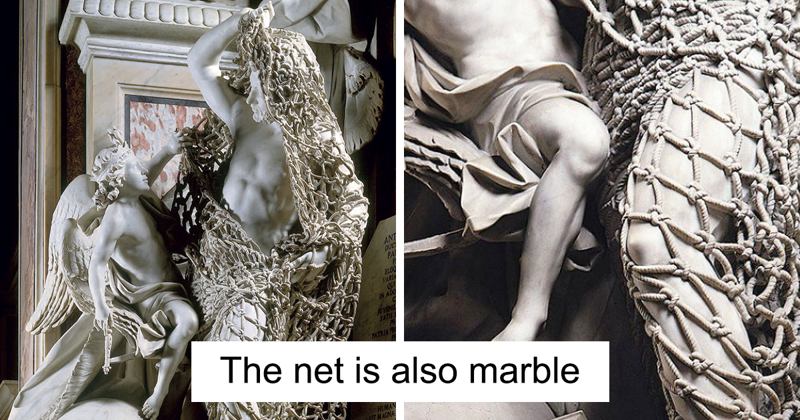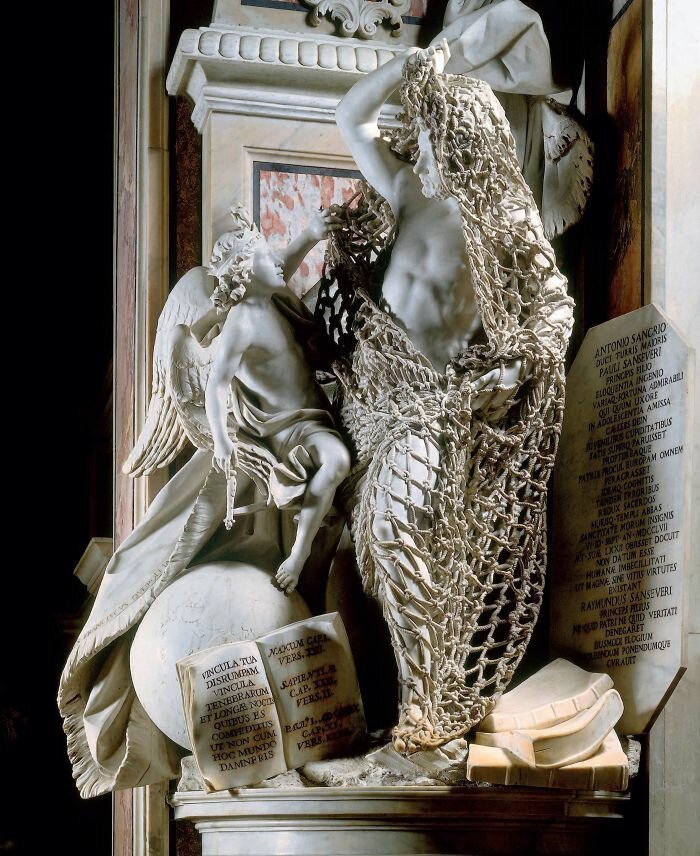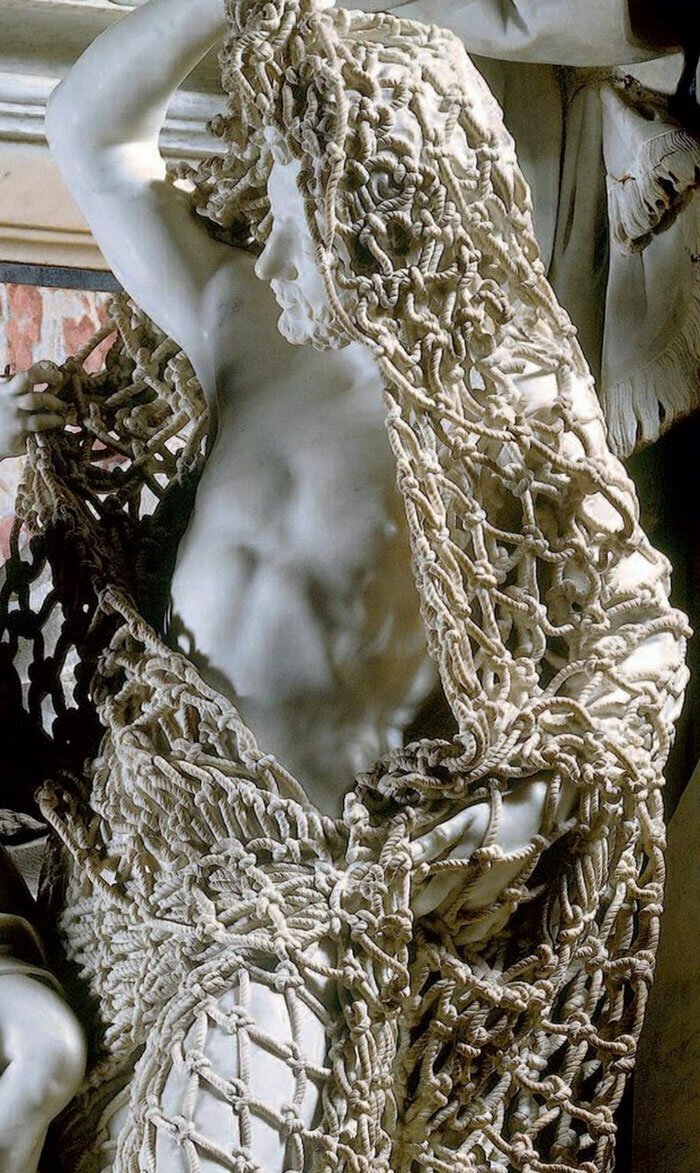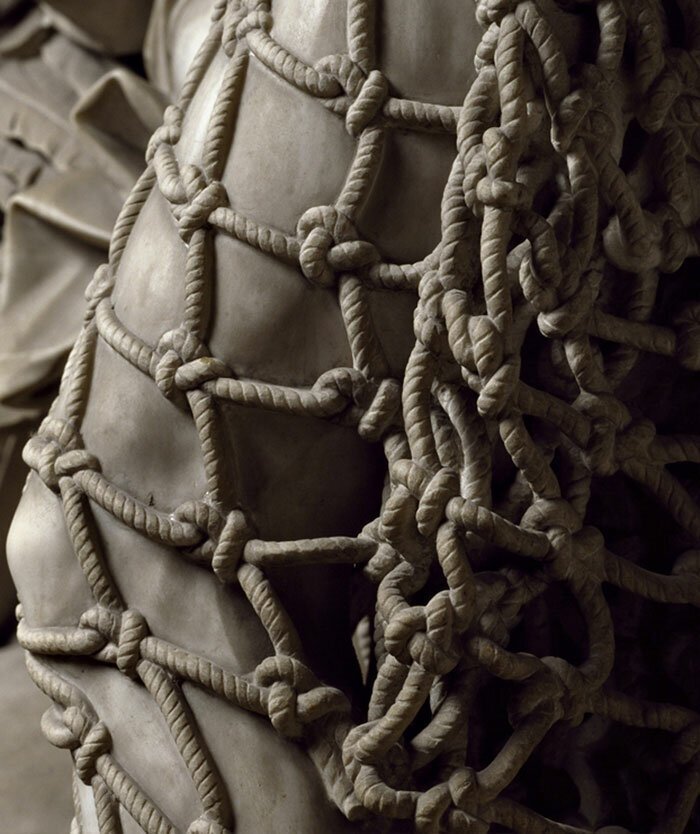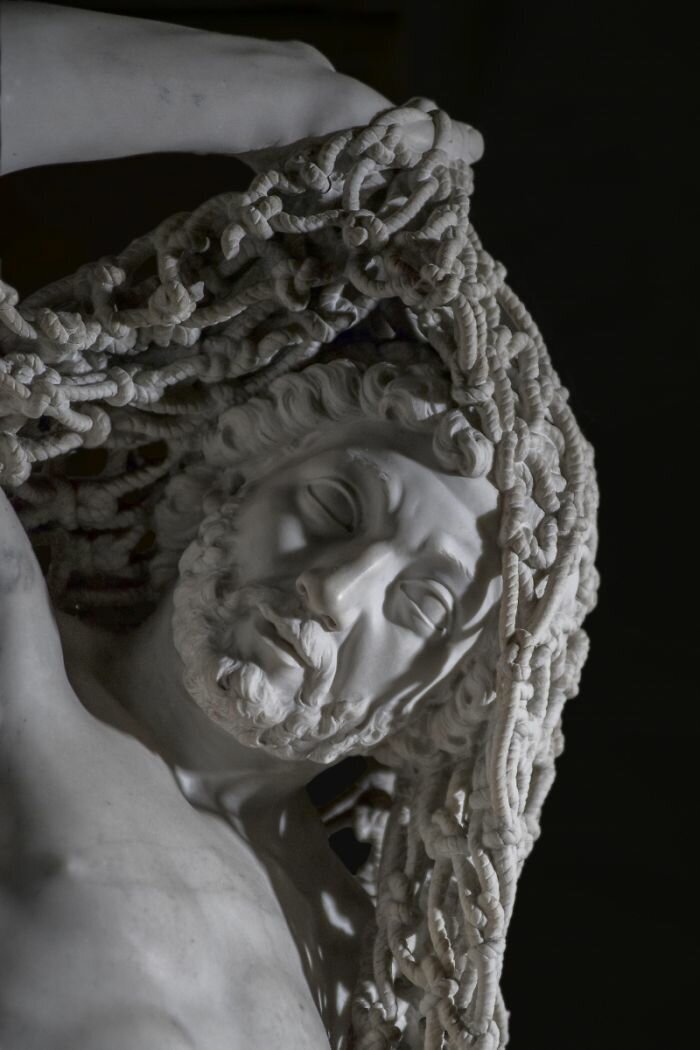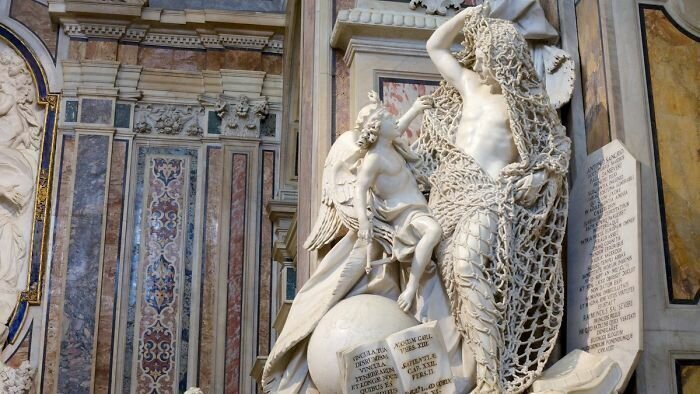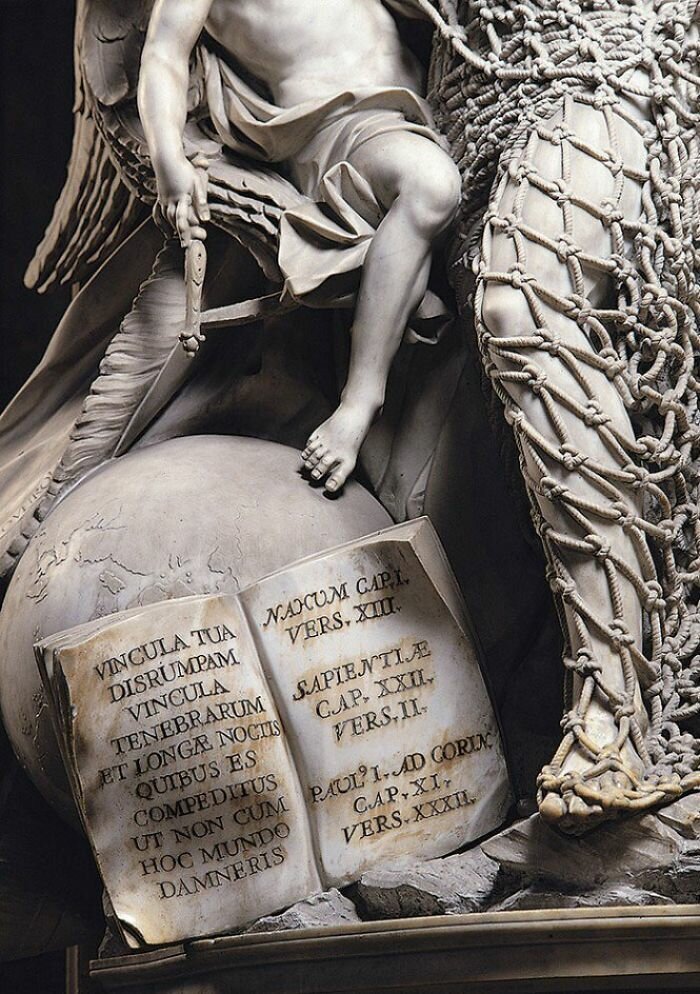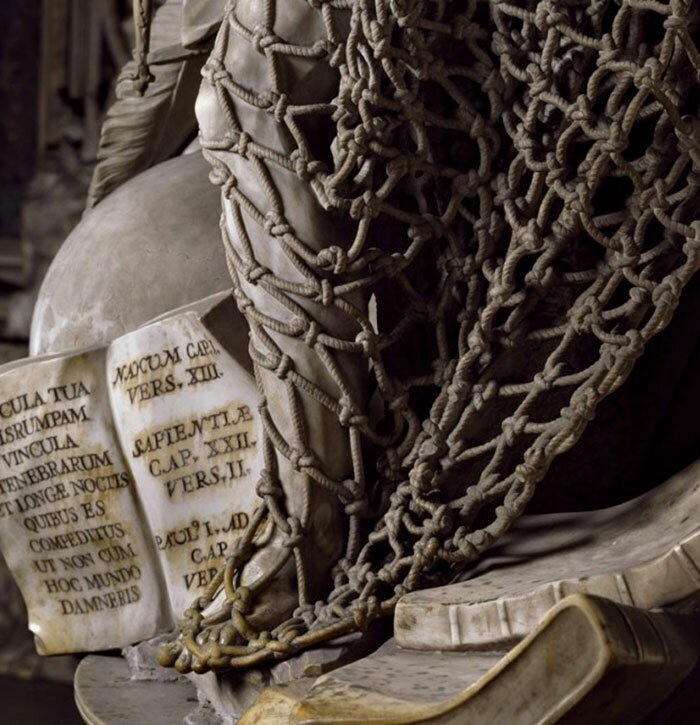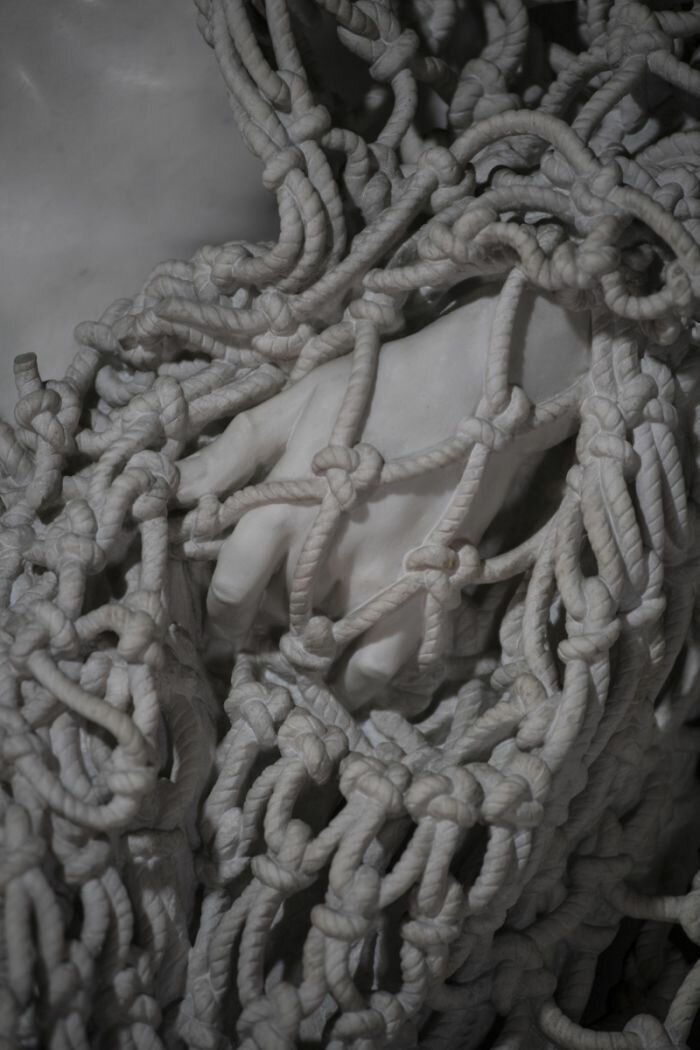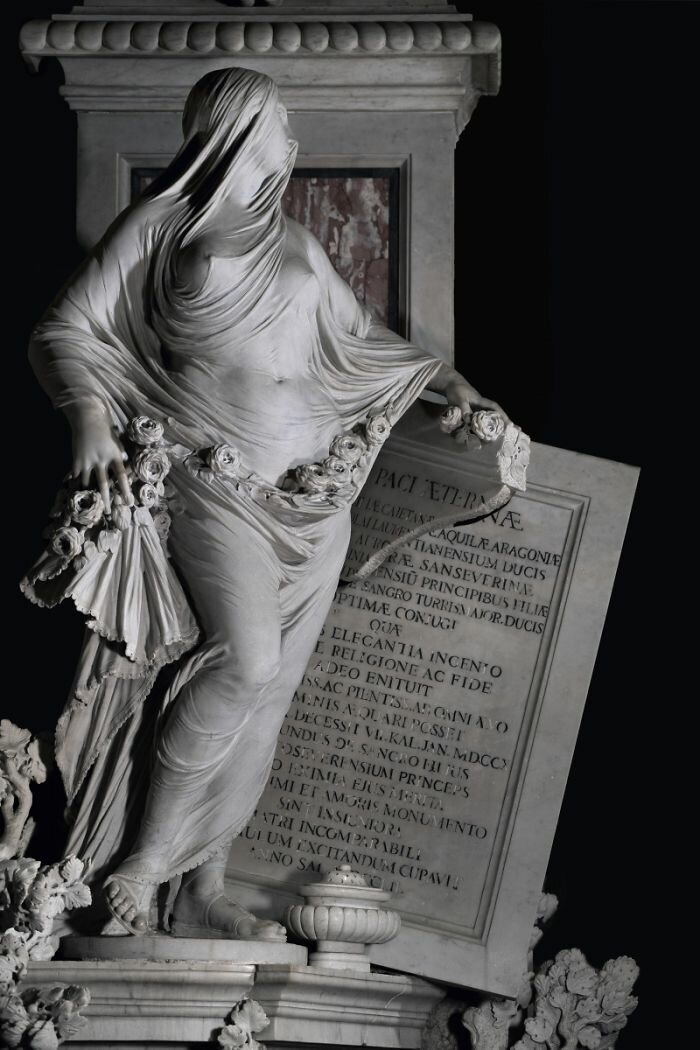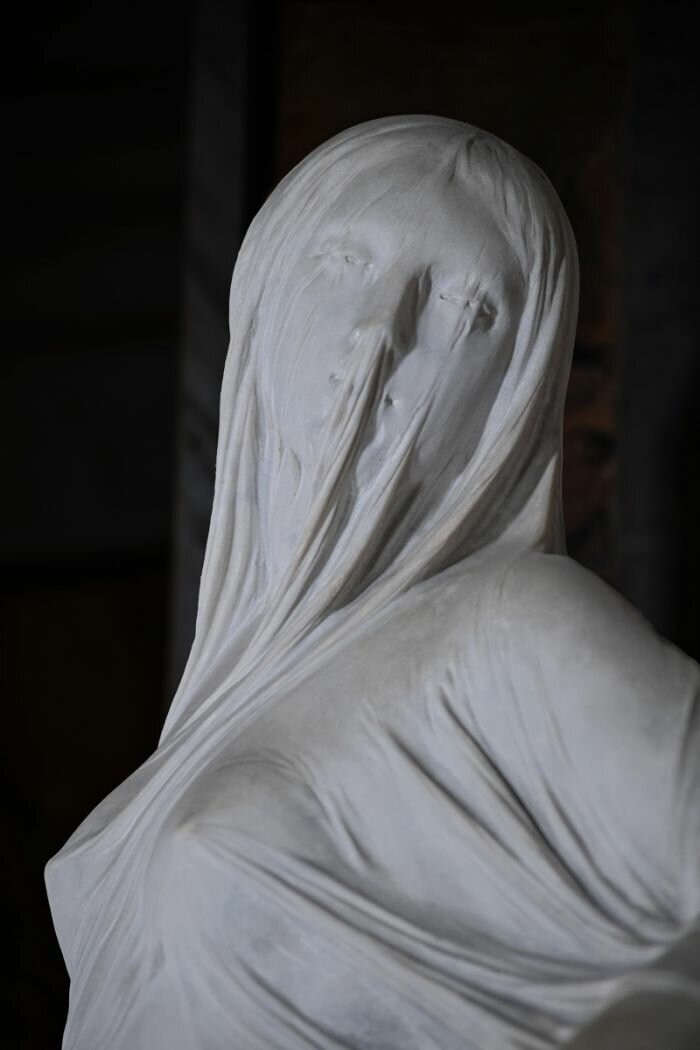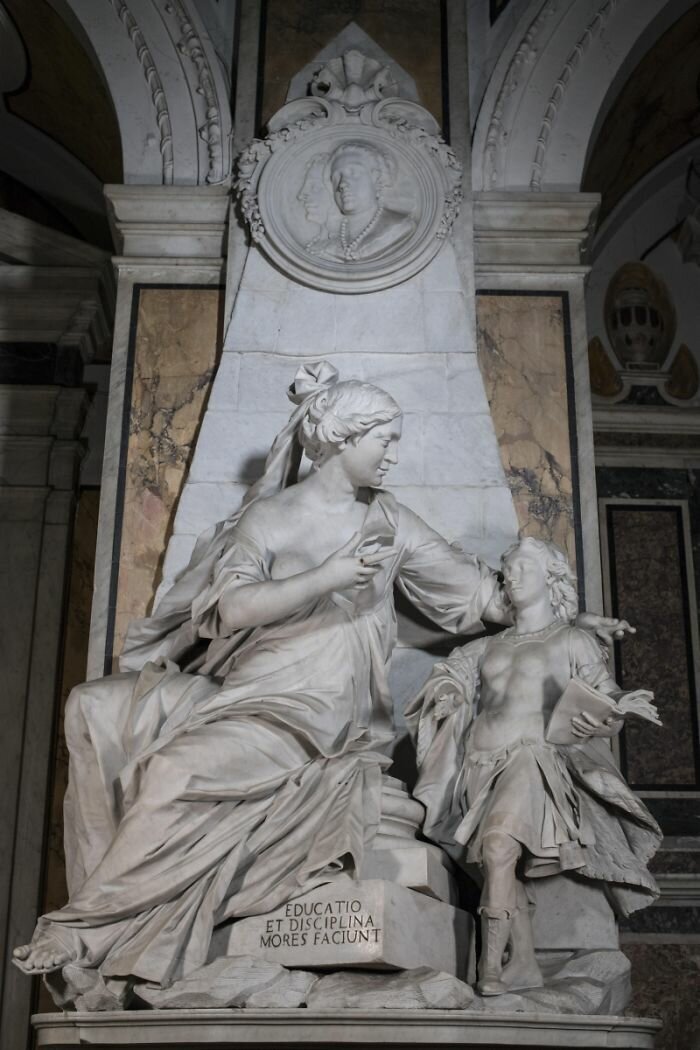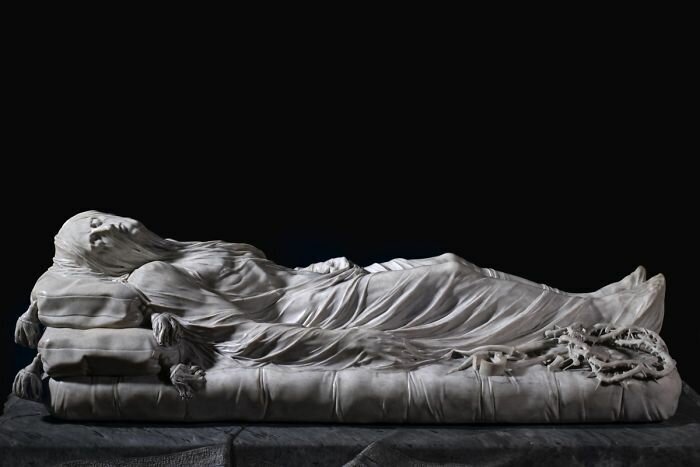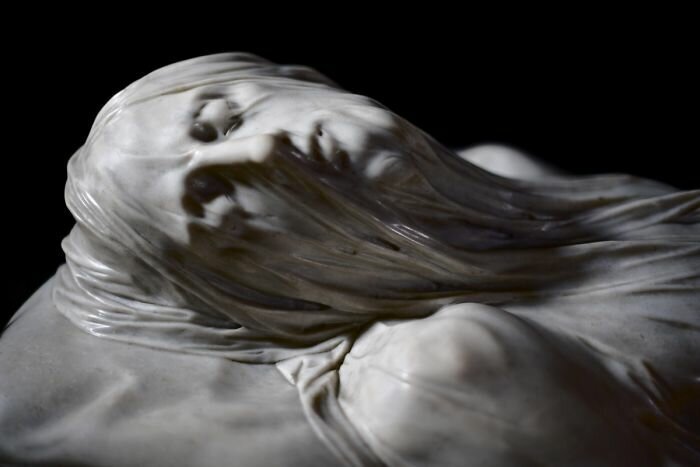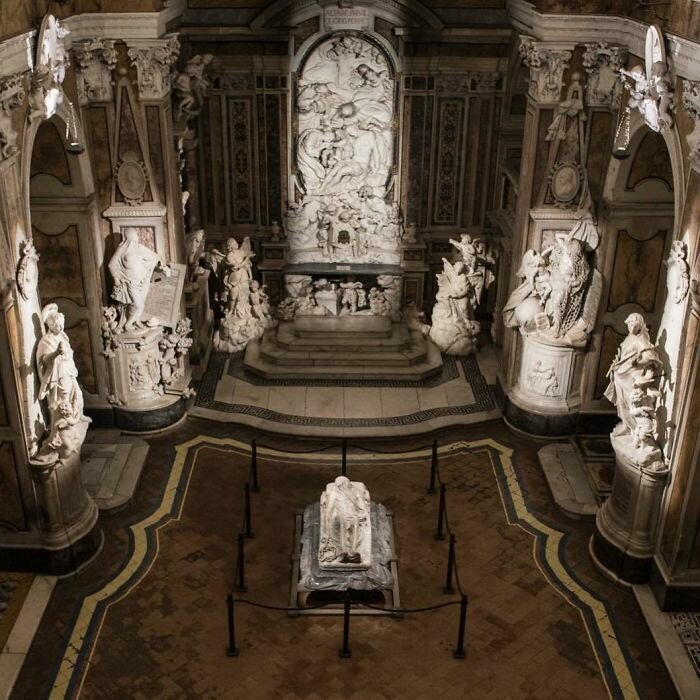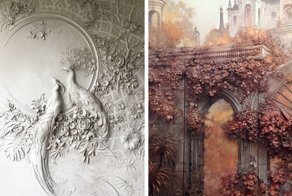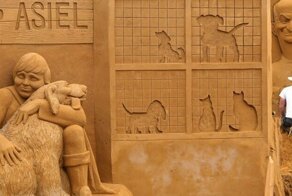0
16
The Cappella Sansevero, a chapel in the historic center of Naples, Italy, is one of the most awe-inspiring spaces on Earth. Everywhere you look you are confronted by sculptures of astonishing beauty, a bevy of masterpieces from 18th century Italian artists that have left visitors scratching their heads in wonder for hundreds of years: how can such intricate works possibly have been carved from single pieces of marble?
Il Disinganno (Disillusion or Release from Deception), the masterpiece of Genoese artist Francesco Queirolo, is one piece in particular that leaves patrons puzzled. It portrays a man breaking free from a delicate, elaborately carved net, helpfully assisted by the presence of a winged angel. According to the museum’s website, the sculpture is steeped in symbolism.
“The group of sculptures describes a man who has been set free of sin, represented by the net into which the Genoese artist put all his extraordinary skill,” they write. “A little-winged spirit, with a small flame on his forehead, a symbol of human intellect, helps the man to free himself from the intricate netting while pointing to the globe at his feet, symbol of worldly passions. An open book rests on the globe; it is the Bible, a sacred text, but also one of the three “great lights” of Masonry. The bas-relief on the pedestal, with the story of Jesus restoring sight to the blind, accompanies and strengthens the meaning of the allegory.”
“In his book Istoria dello Studio di Napoli (1753-54), Giangiuseppe Origlia rightly defines this statue as ‘the last and most trying test to which sculpture in marble can aspire.’ The reference is naturally to the virtuoso work on the net, which amazed famous eighteenth- and nineteenth-century travelers, and continues to astound tourists today.”
“In this regard, the story goes that – as had already happened to Queirolo years before, when he was working on another statue – the sculptor had to burnish the sculpture with pumice personally, as the craftsmen of the period, though specialized in the burnishing phase, refused to touch the delicate net in case it broke into pieces in their hands.”
Other notable masterpieces among the 28-piece collection include The Veiled Truth (Pudizia, also called Modesty or Chastity) which was completed by Antonio Corradini in 1750 as a tomb monument. and the 1753 Christ Veiled under a Shroud (also called Veiled Christ), by Giuseppe Sanmartino, which shows the influence of the veiled Modesty.
Modesty
Education
The Statue
Source:
Ссылки по теме:
- Japanese Continue The Tradition Of Rice Harvest Season By Creating Gigantic Straw Sculptures
- After My Picture Went Viral i Knew That i Needed To Make More Art From The Litter That i Find
- Russian Artist Uses Ancient Technique To Turn Walls Into Art, And The Result Is Gorgeous
- Giant Hands Reaching For Each Other Becomes The Newest Monumental Sculpture In Venice
- Amazing Images From A Belgian Sand Sculpting Festival
реклама


